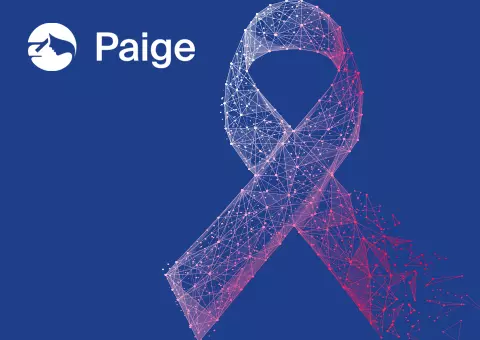As of the end of 2020, there were 7.8 million women alive who had been diagnosed with breast cancer in the 5 years from 2015-2020, making it the world’s most prevalent cancer.1 Yet each of these women may have had a slightly different diagnosis; Breast cancers are defined by numerous factors including tumor stage, tumor grade, hormone receptor status, and HER2 status.2 As such, there is no one-size-fits-all solution for patients who have breast cancer. Instead, we need precision medicine that allows us to find the best treatment pathways possible for every patient based on the nuances of their individual diagnosis, medical histories, and unique personal needs.
A simple first step toward making precision medicine a reality is introducing advanced technologies that allow pathologists to more confidently diagnose even the most complex cases. Artificial intelligence (AI) is a great example. When trained on a large, diverse data set, AI can learn to identify instances suspicious for cancer with extremely high sensitivity, automatically stratify neoplasms by subtype, and identify metastases. It can also reduce the tedium associated with mitotic counting to simplify grading in invasive breast cancer regions. Thus, when AI is put in the hands of a pathologist, it can help support them in confidently completing each step in the diagnostic process and act as a quality assurance tool to ensure nothing has been missed, which can provide a strong foundation for the rest of the care journey.
A second step is to streamline the identification of breast biomarkers. Most breast cancers today are tested for the presence of estrogen (ER) and progesterone (PR) receptors and HER2 protein, and this is typically done using immunohistochemistry (IHC). However IHC testing can add days to the diagnostic process, especially should further stains such as Fluorescence in situ hybridization (FISH) then be needed to arrive at a precise diagnosis. Recent studies have also found that as many as 51% of previously diagnosed HER2-negative patients could actually be considered HER2-low 3,4, which may signal the need for alternative testing approaches that, combined with IHC, can aid pathologists in uncovering true HER2-negative or true HER2-positive disease.
This where AI comes in – Paige HER2Complete is the first and only H&E based digital biomarker capable of detecting morphological phenotypes consistent with HER2 expression in IHC negative or equivocal-IHC1+ samples.This improves accuracy in HER2 identification and could in the future reduce turnaround times for patients. AI could potentially be similarly applied to ER and PR identification to streamline those procedures, and even has the potential to provide novel information to physicians to transform how we understand and treat breast cancers.
Importantly, AI is powerless if adoption is not widespread. At Paige, we’ve built accessibility into our products, offering cost effective storage solutions, simple integration with existing lab systems, and a cloud-based platform that can be accessed from any device with an Internet connection. Our interfaces are user friendly, and each feature has been designed in close collaboration with pathologists to ensure that the user experience is as straightforward and efficient as possible. Coupled with industry-wide efforts to create a reimbursement structure for pathology AI as well as continued research to examine the impacts of AI on patients, these careful product considerations will help to accelerate AI adoption and move the needle toward precision medicine.
Together, diagnostic AI and AI-powered biomarker assays enhance the information available to pathologists at the time of diagnosis to allow them to provide the most comprehensive report possible to the rest of the care team. This means the entirety of the cancer care team has the information they need at their fingertips to make informed treatment decisions with the highest chance for positive outcomes. While AI adoption is not yet widespread, we believe a future where it is used to enable precision medicine is not far off, and this will truly transform the experience of breast cancer care to make a better world for patients.
Stay up to date on how Paige is working to develop HER2 AI biomarker assays.
Learn more about our diagnostic AI for breast cancer, Paige Breast Suite.
References
1Breast cancer. World Health Organization. https://www.who.int/news-room/fact-sheets/detail/breast-cancer. Published March 26, 2021. Accessed October 3, 2022.
2Molecular Subtypes of Breast Cancer. Susan G. Komen. https://www.komen.org/breast-cancer/diagnosis/molecular-subtypes/. Updated November 15, 2021. Accessed October 3, 2022.
3Tarantino, P. et al., (2020) J Clin Oncol. 10;38(17):1951-1962.
4Modi S, Jacot W, Yamashita T, et al; DESTINY-Breast04 Trial Investigators. Trastuzumab deruxtecan in previously treated HER2-low advanced breast cancer. N Engl J Med. 2022;387(1):9-20.
*In European Union and United Kingdom, HER2Complete is CE-IVD marked for clinical use with Leica Aperio AT2 Scanner. In United States and where research use is permitted, HER2Complete is limited to Research Use Only and not for use in diagnostic procedures.

